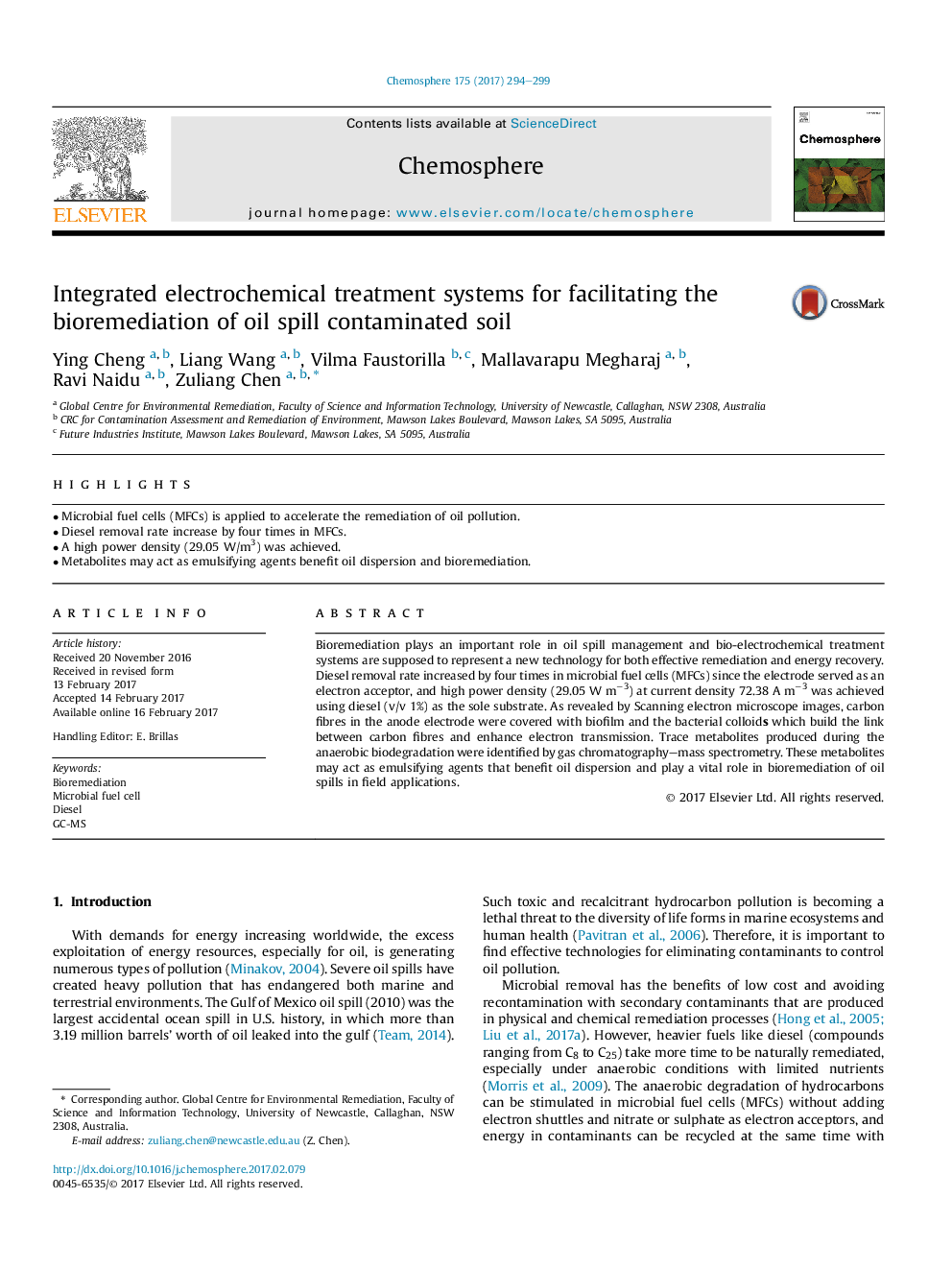| Article ID | Journal | Published Year | Pages | File Type |
|---|---|---|---|---|
| 5746518 | Chemosphere | 2017 | 6 Pages |
â¢Microbial fuel cells (MFCs) is applied to accelerate the remediation of oil pollution.â¢Diesel removal rate increase by four times in MFCs.â¢A high power density (29.05 W/m3) was achieved.â¢Metabolites may act as emulsifying agents benefit oil dispersion and bioremediation.
Bioremediation plays an important role in oil spill management and bio-electrochemical treatment systems are supposed to represent a new technology for both effective remediation and energy recovery. Diesel removal rate increased by four times in microbial fuel cells (MFCs) since the electrode served as an electron acceptor, and high power density (29.05Â WÂ mâ3) at current density 72.38 A mâ3 was achieved using diesel (v/v 1%) as the sole substrate. As revealed by Scanning electron microscope images, carbon fibres in the anode electrode were covered with biofilm and the bacterial colloids which build the link between carbon fibres and enhance electron transmission. Trace metabolites produced during the anaerobic biodegradation were identified by gas chromatography-mass spectrometry. These metabolites may act as emulsifying agents that benefit oil dispersion and play a vital role in bioremediation of oil spills in field applications.
